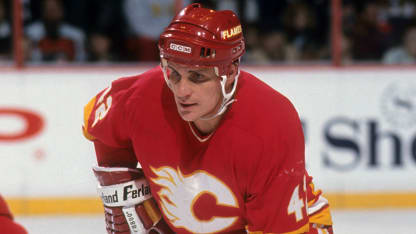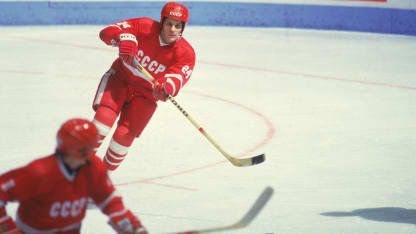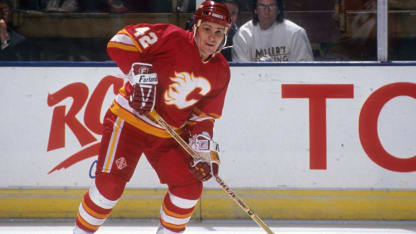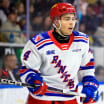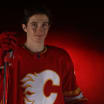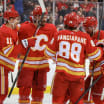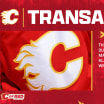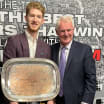By the time Makarov made the leap to North America, he was 30 years old and the Flames were freshly-minted Stanley Cup champions, hockey's deepest organization, poised (or so everyone thought) to put together a sizeable championship run.
Combining the strength of a stevedore with the light touch of a diamond cutter and the obstinacy of a mule, the stocky winger from Chelyabinsk had already reached legendary status internationally (when the IIHF named its centenary six, Makarov was there, alongside fellow Soviet stars Valeri Kharlamov, Vyacheslav Fetisov and Vladislav Tretiak, along with Sweden's Borje Salming and Canada's No. 99, Wayne Gretzky).
He joined the Flames in Moscow to open their Friendship Tour of the Soviet Union and Czechoslovakia in the fall of 1989, having already collected two Olympic and World Junior Championship gold medals to go along with eight World Championship titles.
Since Fletcher had drafted Makarov 231st overall at the 1983 entry draft, to much, 'Oh yeah, right?' incredulity/merriment from his managerial brethren, he had been in constant contact with the Soviet Ice Hockey Federation over releasing the right flank of the game's most potent attacking unit, the fabled KLM (Vladimir Krutov-Igor Larionov-Makarov) line.
"The growing threat of players defecting from the Soviet Union, I think, influenced their decision,'' reasons Fletcher, 27 years later. "They must've felt they had to at least investigate the possibility of making players available. That was certainly a better option for them than having them leave for nothing."
As a test, the Soviets had allowed a journeyman winger, Sergei Pryakhin, a late pick of Calgary, in 1988, to act as an advance man.
"Just sort of a player out of the blue", according to Fletcher. On tour in Ontario with a Russian club team, Pryakhin joined the Flames for one season, the Cup-winning campaign.
(On May 29th, 1989, the sight of Pryakhin, in suit and tie, completely mystified watching the Cup-clinching celebrations inside the Montreal Forum, Stanley Cup ball cap perched awkwardly on his head, price tag/label hanging limply, is unforgettable to anyone there that night).
"I think the Soviets believed Pryakhin's introduction to an NHL had gone very well,'' recalls Fletcher. "That's when they decided to let a couple of their star players go.
"So (Vancouver Canucks' GM) Pat Quinn and I went over to Moscow, got there on the same day at the end of June in '89. On July 1st, Pat signed Igor Larionov and we signed Makarov."
